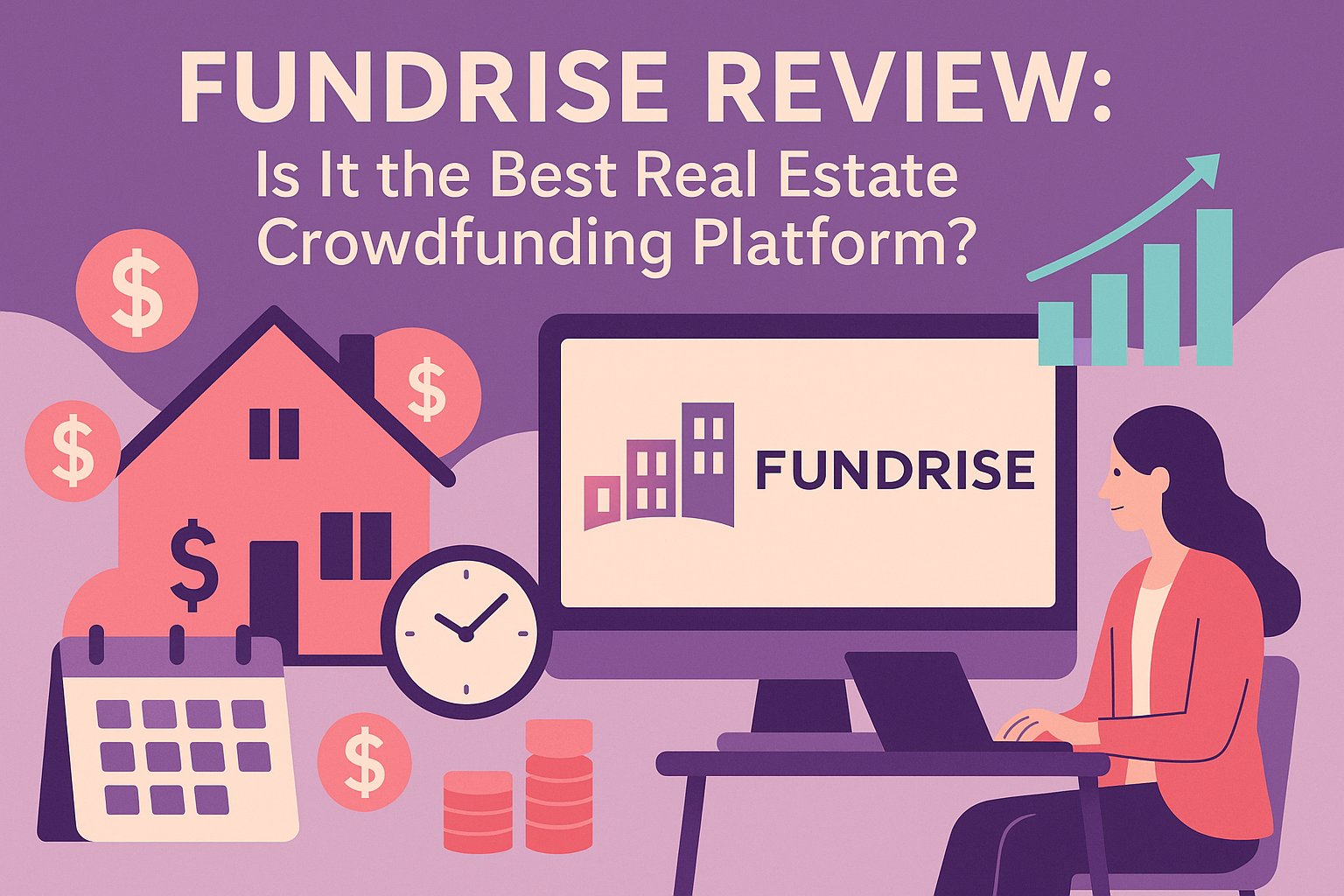Diving into the Digital Real Estate Revolution
As the world of real estate evolves, two platforms have emerged at the forefront of the crowdfunding movement: RealtyMogul and Fundrise. Both democratize access to institutional-quality commercial and residential properties, allowing individual investors to participate with relatively modest capital. But which platform aligns best with your financial aspirations, risk tolerance, and long-term goals? In this comprehensive comparison, we’ll explore how RealtyMogul and Fundrise structure their offerings, underwrite deals, and deliver returns, guiding you toward the platform that’s right for your investment journey.
Unveiling RealtyMogul’s Investment Ecosystem
RealtyMogul launched in 2013 with a mission to connect individual investors to pre-vetted real estate opportunities. The platform offers three primary vehicles: private placement investments in individual properties, institutional-quality REITs (MogulREIT I and II), and debt offerings. Individual property deals span multifamily apartments, retail centers, office complexes, and industrial projects. To ensure deal quality, RealtyMogul employs an in-house underwriting team that rigorously analyzes market data, sponsor track records, and financial projections. Accreditation is generally required—meaning investors must meet SEC-defined income or net worth thresholds—though the MogulREITs are available to non-accredited investors. By vetting sponsors and curating opportunities, RealtyMogul positions itself as a bridge between traditional real estate diligence and online convenience, targeting investors who want selective, property-level control or broader diversified REIT exposure.
Exploring Fundrise’s Diversified Portfolio Model
Fundrise, founded in 2010, takes a different approach by pooling investor capital into eREITs and eFunds—proprietary real estate investment trusts and funds that aggregate multiple properties under one umbrella. Instead of picking individual projects, investors select from tiered portfolios—such as Starter, Supplemental Income, Balanced Income, and Long-Term Growth—each focused on a blend of equity and debt positions across commercial and residential assets. Fundrise’s minimum investment begins at just $10, making it accessible to retail investors of all backgrounds. The platform’s in-house sponsor teams source, acquire, and manage properties directly, emphasizing transparency through quarterly performance reports and interactive dashboards. By shifting due diligence and portfolio construction to a managed fund structure, Fundrise appeals to investors seeking diversified real estate exposure with minimal decision-making overhead.
Comparing Investment Structures and Minimums
One of the first considerations when choosing between RealtyMogul and Fundrise is the investment structure and required capital. RealtyMogul’s individual property deals typically require minimum investments in the range of $25,000 to $50,000—reflecting the cost of acquiring a single commercial asset. MogulREITs, with broader diversification, lower the bar to a $1,000 minimum, enabling non-accredited investors to participate. Debt offerings on RealtyMogul, such as bridge loans for short-term financing, often require a $5,000 minimum. Fundrise, by contrast, boasts an entry point as low as $10 for its Starter Portfolio. More advanced portfolios—like Balanced Income or Long-Term Growth—require $1,000 or more. This accessible minimum is a hallmark of Fundrise’s inclusive philosophy, attracting those who may want to test the waters with a nominal contribution. Investors must weigh whether they prefer deep, single-property exposure with higher thresholds (RealtyMogul) or broader, low-barrier diversification (Fundrise).
Underwriting and Due Diligence: Depth vs. Breadth
When investing through RealtyMogul, you essentially take an ownership stake in a specific project. Underwriters analyze property fundamentals—rent rolls, borrower credit, local economic indicators—and typically present a detailed offering memorandum. Investors can review pro forma financials, deal sponsor histories, and market studies. This granular approach offers transparency into the nitty-gritty of each property, but demands more diligence on the investor’s part. By contrast, Fundrise’s model delegates underwrite tasks to internal sponsor teams, who compile, analyze, and select properties for each eREIT or eFund. Investors receive quarterly snapshots of portfolio performance—aggregate occupancy rates, net operating income, and distribution yields—rather than line-item details on each property. While this vertical integration streamlines the process, it reduces the transparency found in RealtyMogul’s single-asset offerings. Thus, those who relish a hands-on, property-specific examination may gravitate toward RealtyMogul, whereas those who prefer a high-level, managed portfolio will find Fundrise’s breadth appealing.
Fee Structures and Their Impact on Returns
Fees can subtly erode returns over time, so understanding how each platform charges for its services is critical. RealtyMogul’s fee model typically includes acquisition fees—often 1 to 2 percent of the property price—asset management fees that range from 1 to 2 percent of equity, and disposition fees when the asset exits. These fees are disclosed upfront and factored into the pro forma projections. MogulREITs carry an annual asset management fee of 1 percent, which covers portfolio management and administrative expenses. Fundrise, on the other hand, charges an annual advisory fee of 0.15 percent—covering the platform’s software, account administration, and investor education—plus underlying management fees that range from 0.85 to 1.00 percent depending on the eREIT or eFund. This combined fee, typically around 1.00 to 1.15 percent, can be more cost-effective than the property-level fees in RealtyMogul’s private placements, particularly for smaller investors. However, since Fundrise’s fees are spread across a broader portfolio, investors relinquish some sponsor-promote upside that RealtyMogul’s equity deals might offer.
Evaluating Historical Performance and Yield Metrics
Performance data provides a window into each platform’s track record. RealtyMogul’s individual property offerings have yielded a wide range of returns—some stabilized REIT projects delivering mid-single-digit yields, and value-add deals achieving double-digit IRRs. Yet these outcomes vary heavily based on sponsor execution and market timing. MogulREIT I and II have historically produced net returns in the 5 to 7 percent annualized range, combining dividends and appreciation. Fundrise’s Starter Portfolio has averaged annualized returns between 6 and 10 percent since inception, driven by both income distributions and NAV growth. The Balanced Income portfolios yield steady quarterly dividends of 4 to 7 percent in most market conditions, while Long-Term Growth funds emphasize appreciation with a smaller distribution focus. It’s worth noting that past performance does not guarantee future results, but both platforms’ historical data—publicly available on their websites—offer transparency for comparison. Investors should align yield expectations with their risk tolerance; equity-heavy deals typically present higher return potential with greater volatility, while debt-oriented or diversified portfolios provide steadier yields.
Liquidity and Exit Strategies: A Critical Comparison
For many investors, liquidity is a pressing concern. RealtyMogul’s private placements often come with multi-year lock-up periods, typically tied to refinancing or sale of the underlying property—often three to seven years. Some individual property notes may allow limited secondary market transactions, but these can be thinly traded and subject to discounts. MogulREITs offer quarterly redemptions with a modest early redemption fee, affording a measure of liquidity. Fundrise’s eREITs implement a quarterly redemption system as well, following an initial 90-day hold period. Investors can request redemptions between March and June each year, subject to availability of liquid capital, or opt into an Income Reinvestment Program that limits redemptions but accelerates compounding. Although both platforms offer some liquidity, neither matches the immediate tradability of publicly traded REITs. Investors must assess their time horizons—if short-term flexibility is paramount, neither platform is ideal; but if a multi-year commitment aligns with their objectives, both provide structured exit options.
User Experience and Platform Accessibility
Navigating the digital interface can greatly influence investor satisfaction. RealtyMogul’s platform offers a sophisticated dashboard, but because it caters largely to accredited investors seeking individual properties, its interface includes detailed deal pages with downloadable documents, subscription management tools, and performance trackers. In contrast, Fundrise emphasizes user-friendly design, featuring quick-signup processes, interactive portfolio builders, and mobile-responsive dashboards that display real-time valuations, quarterly dividends, and projected returns. Newcomers often find Fundrise’s simplicity appealing: a brief risk questionnaire directs them toward an appropriate portfolio, while ongoing automated rebalancing ensures their allocation aligns with stated objectives. RealtyMogul’s platform, although rich in forensic due diligence data, may appear dense to those unfamiliar with commercial real estate metrics. Ultimately, investors must consider whether they prefer a straightforward, guided experience (Fundrise) or a self-directed, detail-oriented interface (RealtyMogul).
Aligning with Investor Profiles and Goals
The decision between RealtyMogul and Fundrise often hinges on individual investor profiles. If you’re a seasoned real estate professional or high-net-worth individual who values granular control and property-specific returns, RealtyMogul’s private placements may be your best fit. Access to large-scale commercial properties—office towers, industrial parks, and Class-A multifamily complexes—can boost portfolio sophistication, albeit with higher minimums and heavier due diligence. Conversely, if you’re a budding investor seeking a low-cost, diversified entry point into real estate, Fundrise’s Start Portfolio or Long-Term Growth funds offer accessible pathways. Those looking for blended income and appreciation can opt for Balanced Income, while liquidity-minded investors benefit from eREITs that provide annual redemption windows. By aligning platform strengths with personal objectives—whether that’s hands-on deal scrutiny or broad, automated exposure—investors position themselves to extract maximum value from their chosen crowdfunding model.
Weighing Risks, Rewards, and Platform Evolution
Neither platform is without risk. Market downturns can depress property valuations, compress cap rates, and reduce distribution yields across portfolios. Sponsorship risks—poor project execution, cost overruns, or tenant vacancies—can disproportionately affect individual property investors on RealtyMogul. Fundrise’s exposure to multiple projects can mitigate single-asset shocks but introduces systemic risk if market headwinds affect entire portfolios at once. Performance transparency remains paramount; RealtyMogul’s quarterly NAV updates and Fundrise’s regular reporting allow investors to track progress but still demand vigilance. Both platforms continue to evolve: Fundrise has rolled out region-specific eFunds to hone geographic diversification, while RealtyMogul expands its assortment of debt offerings and institutional-level deals. Evaluating how each platform adapts to market dynamics and regulatory changes can help investors anticipate future opportunities and preempt potential pitfalls.
Charting Your Crowdfunding Path Forward
Deciding between RealtyMogul and Fundrise ultimately depends on your unique circumstances, goals, and preferences. Do you crave direct engagement with individual commercial properties, complete with in-depth due diligence and potential for outsized returns in niche markets? RealtyMogul’s curated private placements may be your avenue to compelling high-end deals. Are you a cost-conscious investor seeking easy entry, diversified exposure, and an intuitive online experience? Fundrise’s eREITs and eFunds may offer the perfect balance of accessibility and performance. Regardless of your choice, both platforms represent a seismic shift in how real estate investing is conducted, tearing down traditional barriers and inviting a wider pool of investors to partake in cash flow and capital appreciation. As digital innovation continues to transform real estate, the onus falls on investors to align platform features with personal objectives—ensuring that each crowdfunding venture becomes not just a transaction, but a strategic step toward long-term financial growth.




